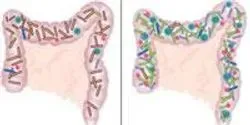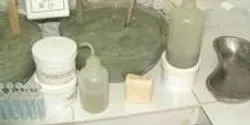Microbiology

A microbe developed to clean up nuclear waste and patented by a Michigan State University researcher has just been improved.

Caltech researchers have developed a novel way to visualize proteins generated by microorganisms in their natural environment—including the murky waters of Caltech's lily pond, as in this image created by Professor of Geobiology Victoria Orphan and her colleagues. The method could give scientists insights to how uncultured microbes (organisms that may not easily be grown in the lab) react and adapt to environmental stimuli over space and time.

Infant rhesus monkeys receiving different diets early in life develop distinct immune systems that persist months after weaning, a study by researchers from UC Davis, the California National Primate Research Center (CNPRC) at UC Davis and UC San Francisco has shown. The study, which compares breast- and bottle-fed infants, appears online September 3 in Science Translational Medicine.

Even the most careful chosen meal can contain surprises. To defend against infectious microbes, viruses or other potential hazards that find their way to the intestines, a dedicated contingent of immune cells keeps watch within the thin layer of tissue that divides the contents of the gut from the body itself.

University of Tennessee, Knoxville, research finds life can persist in a cold, dark world.

Beckman Coulter, an indirect wholly-owned subsidiary of Danaher Corporation (NYSE:DHR), announced today (July 16) that it has entered into a definitive agreement to purchase the clinical microbiology business of Siemens Healthcare Diagnostics.

Some viruses can hide in our bodies for decades and make ‘fake’ human proteins that trick our immune cells into believing nothing is wrong. Now researchers at the Imaging Centre of Excellence at Monash and Melbourne Universities have determined the basic structure of one of the two known families of these deceptive proteins.














